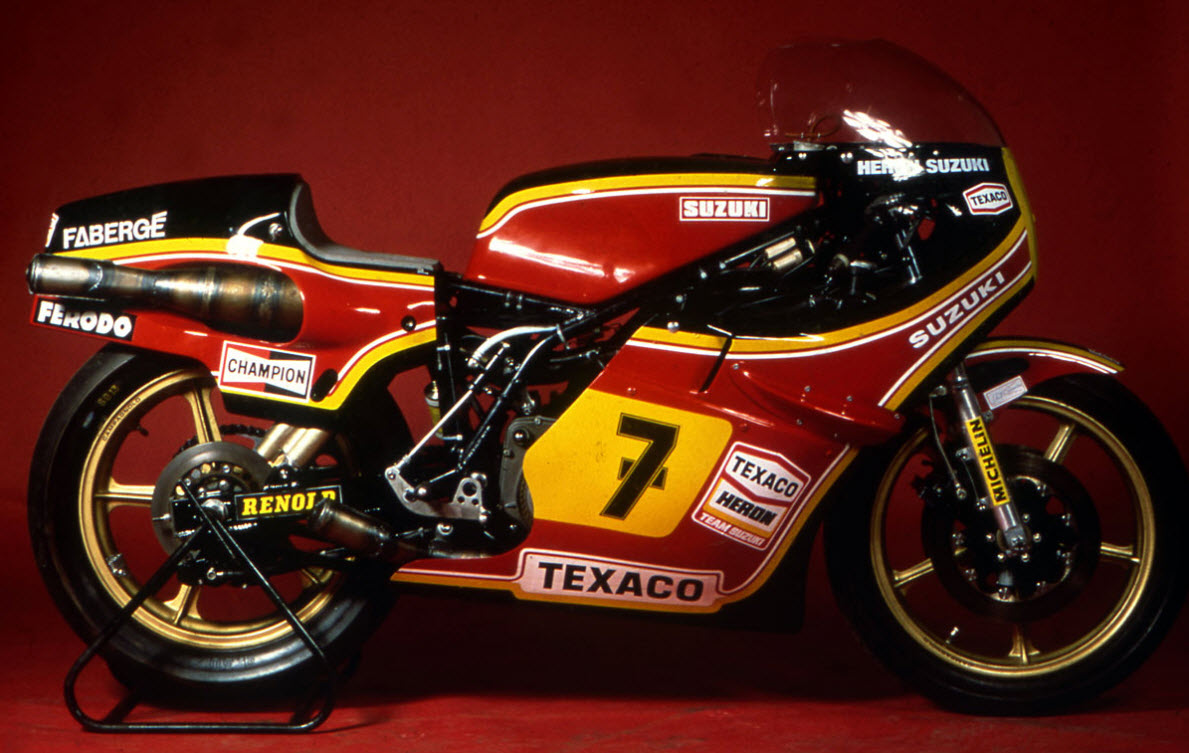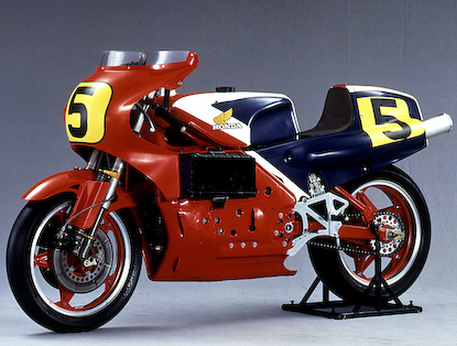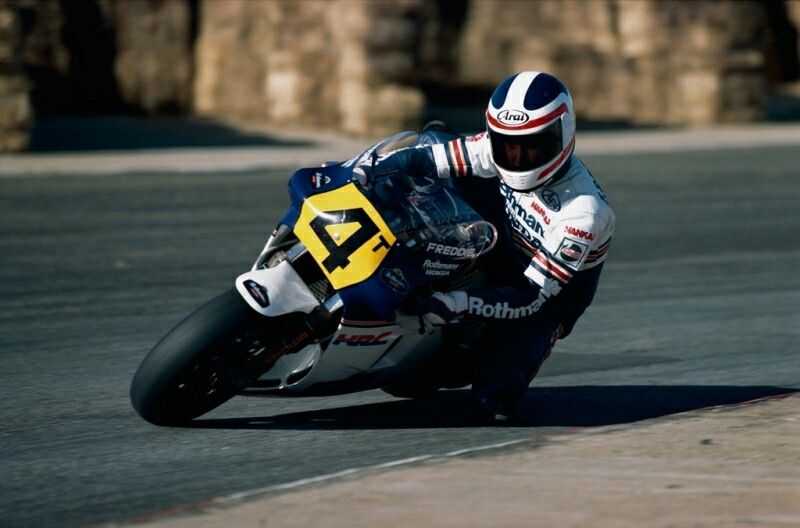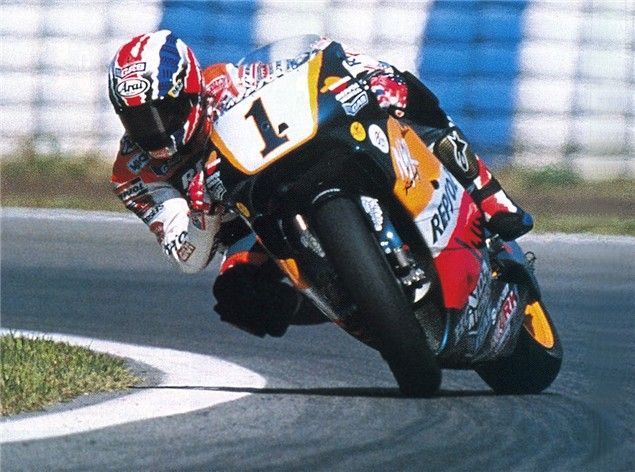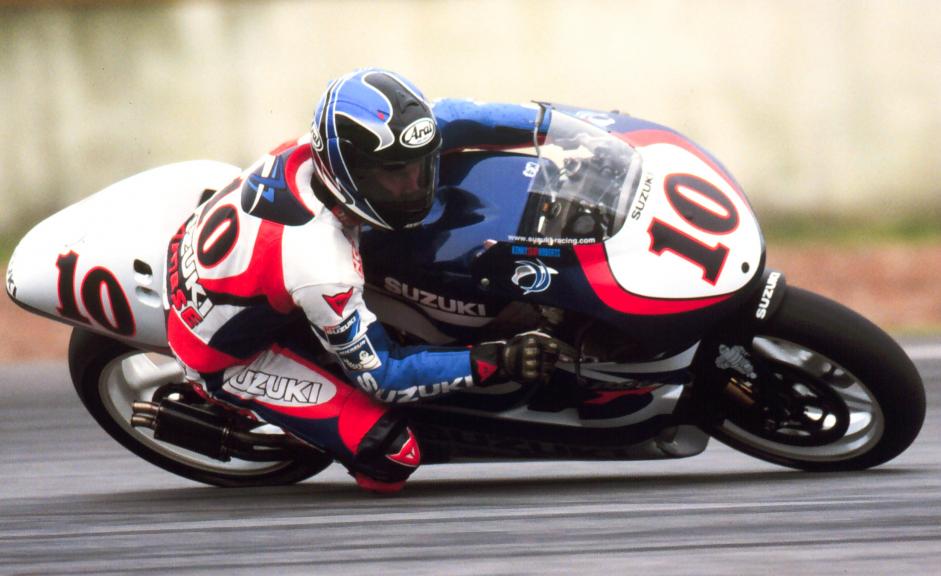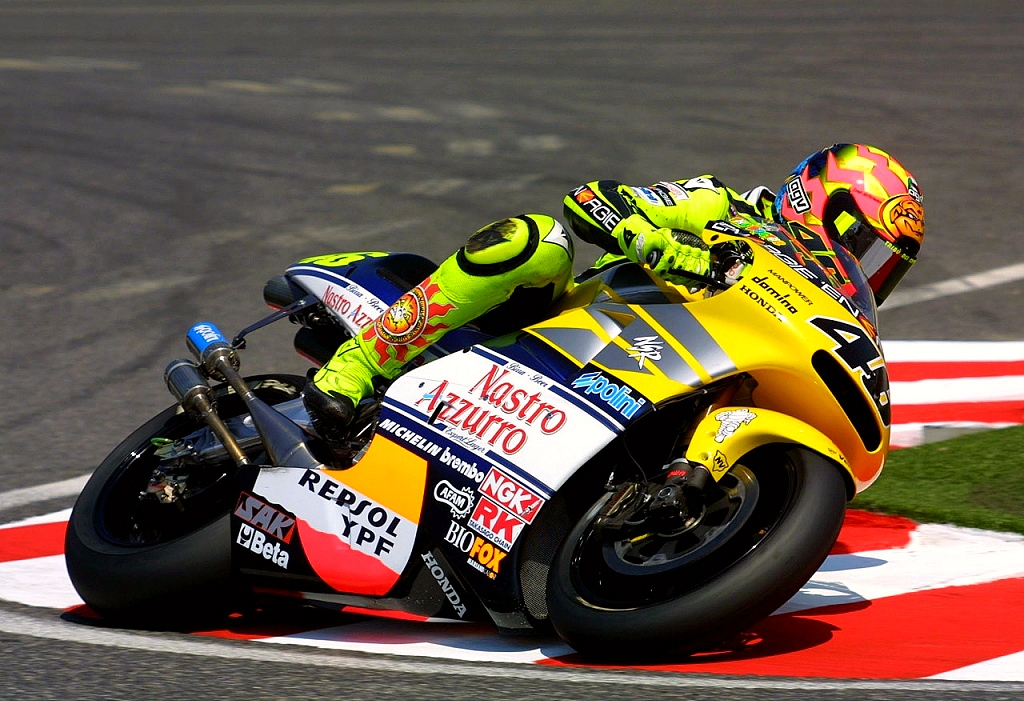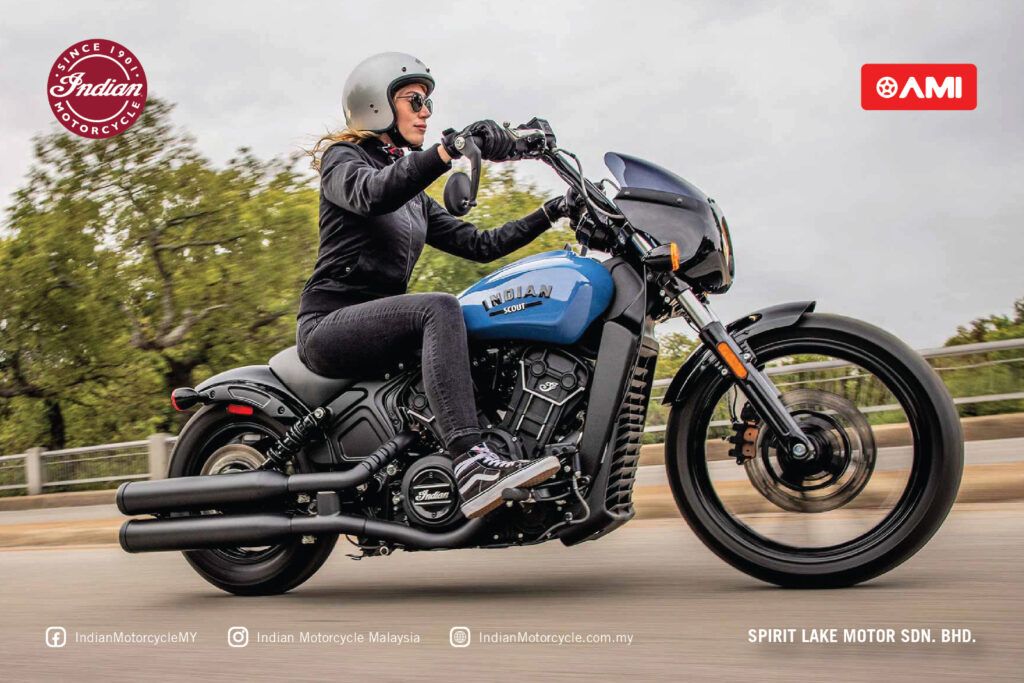-
Many GP fans still reminisce about 500cc two-stroke GP bikes.
-
That era is still considered the golden age of GP racing.
-
It was during the time when many riders fought for the title instead of just one or two.
Many motorcycle GP fans are still calling for the return of the 500cc two-stroke GP bikes.
The reasons are simple: These bikes didn’t have rider electronics, and most of all, they were scary and unpredictable. The latter reason caused spectacular high sides and crashes. But they also caused many injuries.
The two-strokes had wafer thin powerbands and required as much finesse as skill to ride. get it wrong and the bike will either high side the rider into hyperspace or seize – so choose your poison.
It was the work of one Walter Kaaden who laid the foundations for competitive two-strokes. Through the development of using the rotary disc valve and expansion chamber exhaust, he would arrive at 200 hp/litre engine in the 1961 MZ Motorrad GP racer. That bike won 13 GPs and 105 podiums between 1955 and 1976.
Four-strokes had dominated the 500cc class up to the early 70s, but it was Barry Sheene who first turned the category into a two-stroke war.
Sheene had first raced on the four-stroke TR500, but it was no match for the three-cylinder two-stroke Kawasakis. The TR500 made only 70 hp and was complex and heavy. The screaming two-strokes made more power and were lighter.
Hence, Suzuki set out to build their own two-stroke but was beaten to the punch by Yamaha. Yamaha produced the OW23 500cc two-stroke racer by drawing on their previous success in 250cc racing and especially the TZ750 beast which they raced in America. Giacomo Agostini took the bike to his last world title in 1975.
Suzuki came up with a new disc valved 500cc racer. The four-cylinders were arranged in a square configuration and the RG500 became known as the “Square Four.” Sheene converted the development into two world championships in 1976 and 1977.
But it was Kenny Roberts Sr. who fought back on the 130hp Yamaha YZR500. The Californian was bred on dirt ovals and introduced rear wheel powerslides besides the kneedown riding technique to the world. He took three back-to-back championships in 1978, 1979 and 1980.
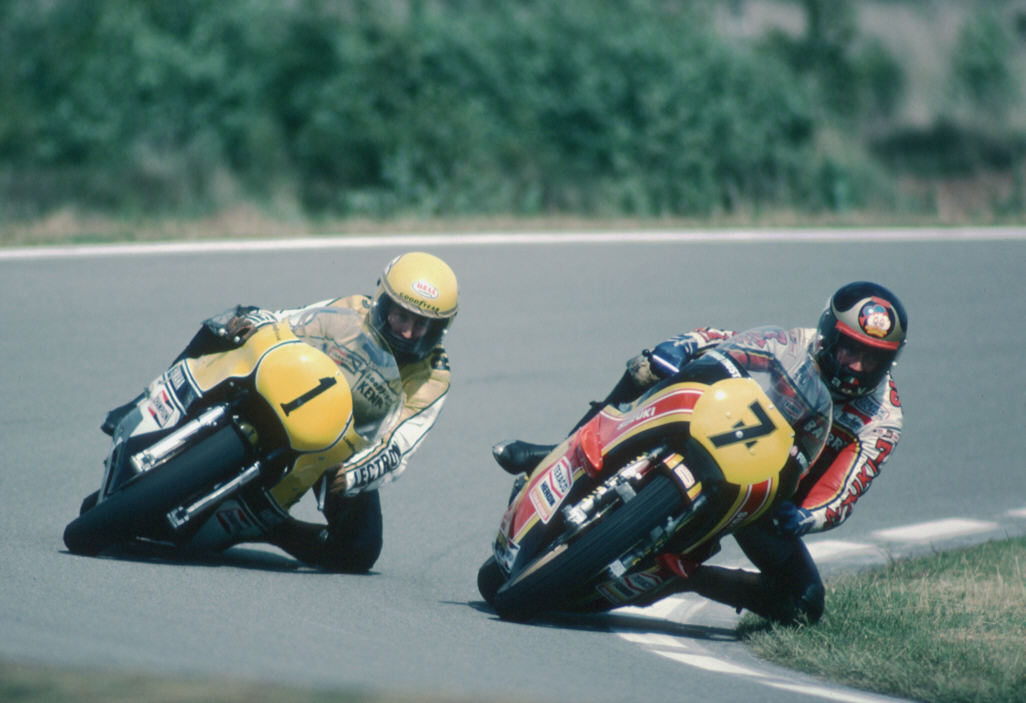
Suzuki’s Marco Lucchinelli won in 1981 after battling the entire year with Randy Mamola. It was Mamola’s second runner-up finish in two years. Barry Sheene would win one last time in Sweden that year before retiring.
Where’s Honda in all this?
Believe or not, Honda has always been a four-stroke company. The 32-valve four-cylinder oval-pistoned NR500 was the result of this philosophy. Ridden by Freddy Spencer in his first season, it got as high as fifth place in the British Grand Prix before breaking down. in fact, the bike broke down more times than it finished any race.
Honda never likes getting beaten so they acquiesced to building two-strokes beginning 1982. Led by a motocross engineer, the project produced the V3 NS500. It was a novel design since it had one horizontal cylinder with three vertical cylinders. Its design philosophy was to sacrifice outright power for handling. Spencer took the bike to his first world championship in 1983 against Kenny Roberts Sr. on the much more powerful but ill-handling YZR500 (OW70). Spencer beat out Roberts by just 2 points.
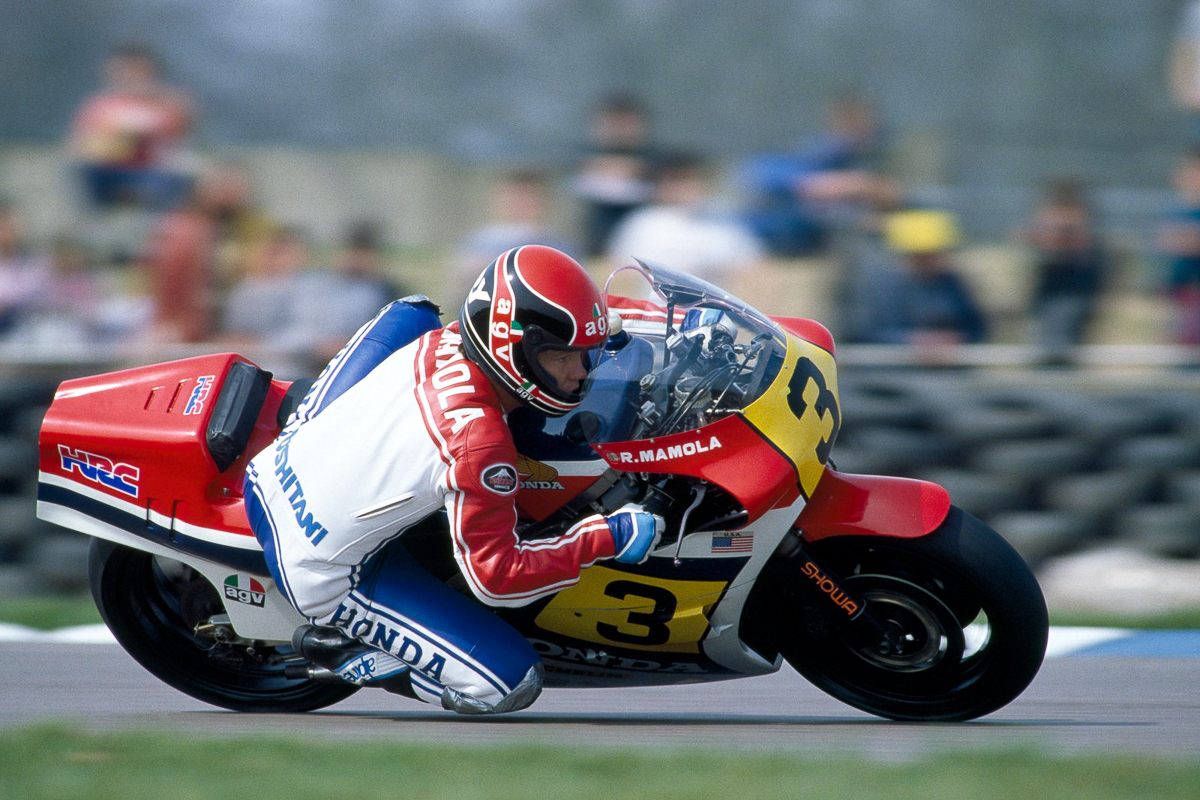
Yamaha and Suzuki had gone down the V-four route, by then and Honda debuted the NSR500 V-four in 1984. Defending champion Spencer crashed and injured himself in opening round in South Africa. He would win five races and finish second on another but had bike problems in four races and retired in one. As such, Eddie Lawson won the title on the YZR500 ahead of Randy Mamola (again).
Spencer fought back in 1985 but he also won the 250cc title in the same year. He is still the only rider who ever achieved such feat.
The Honda NSR500 was to be the legend henceforth as it would become the most dominant 500cc two-stroke bike.
From 1986 to 1993, the battle for the 500cc world championship was a three-corner fight among Honda, Suzuki and Yamaha. But it was Honda and Yamaha who scored eight championships between them, with Wayne Rainey winning three-in-a-row on the YZR500 from 1990 to 1992.
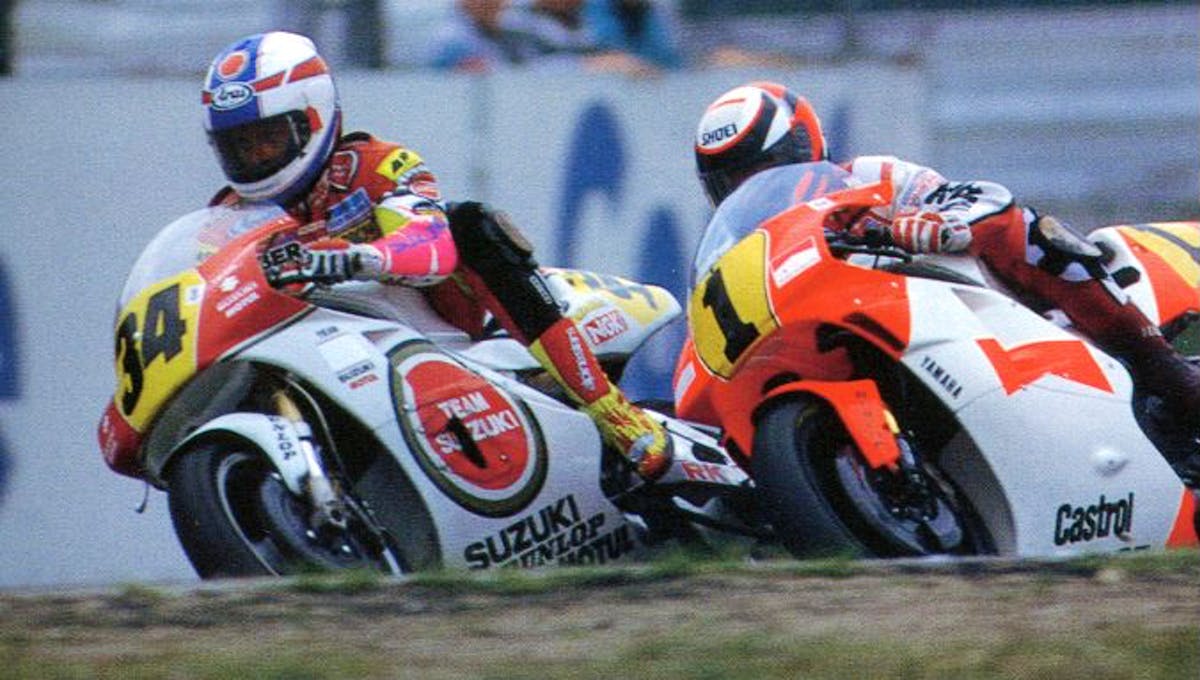
Wainey battled through those years with his arch rival Kevin Schwantz who rode the RGV500. Schwantz would finally capture the title in 1993. It was the year Rainey crashed and broke his back, paralyzing him from the chest down.
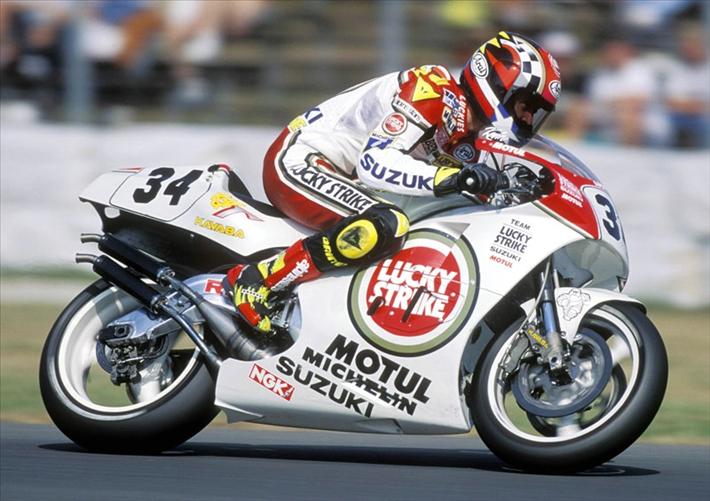
The NSR500 would then keep winning from 1994 to 1998 with Mick Doohan. Doohan suffered greatly at the hands of the NSR500 beast including almost having his right leg amputated. Losing the ability of using his right foot, he began working with a thumb-activated rear brake. Indeed, he crashed and smashed his leg to bits again during practice for the Spanish GP in 1999. He subsequently retired and his crew chief Jeremy Burgess went on to work with Valentino Rossi when he joined Honda in year 2000.
Doohan’s teammate Alex Creville won the 1999 title, with Kenny Roberts Jr. finishing second on the new RGV500. Kenny Roberts Jr. would go on to win the next year.
But that was also the year when Valentino Rossi joined the class. Rossi would win the 2001 and 2002 on the last NSR500. The plucky Italian was surprised by the bike’s power which had reached more than 200 hp by then. A little-known fact was that we won his first 500cc championship on a bike detuned to 168 hp.
2002 was also the first year of the four-stroke 990cc MotoGP bikes. The two-strokes were given an extra year to run alongside the four-strokes. All races were won by the four-strokes while the two-strokes only managed five podiums during the year. The four-stroke bikes also hit higher top speeds all season long.
The four-stroke formula was without criticisms. Despite his dominance, Rossi remarked that there was too much electronic control in the bikes compared to the raw two-strokes. Perhaps he said so due to what he saw as less skilled riders being able to challenge him but that was in the early days. Four-strokes may be more advanced now but they have to be so to contend with 260 to 300 hp engines.
Doohan was right when he said that the era of two-stroke GP racing was at its end after his career-ending crash in 1999. It was after this that Honda began lobbying the FIM and Dorna to switch to four-strokes.
Through the years, the two-stroke 500cc bikes had ended the careers of top riders like Wayne Gardner, Eddie Lawson, Wayne Rainey, Mick Doohan besides those down the field. It’s perhaps by morbid fascination that we wish that these beasts return.

